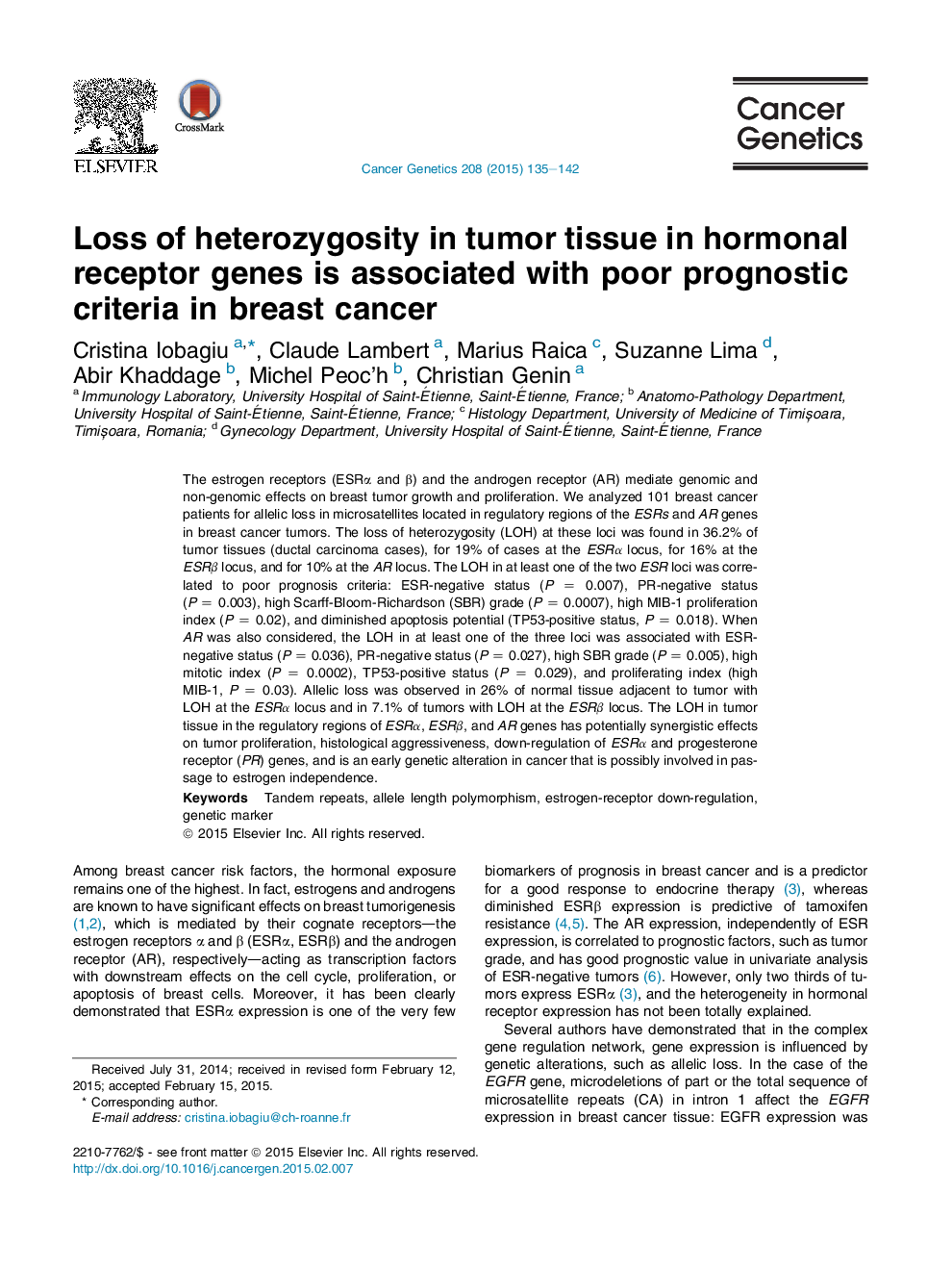| Article ID | Journal | Published Year | Pages | File Type |
|---|---|---|---|---|
| 10897671 | Cancer Genetics | 2015 | 8 Pages |
Abstract
The estrogen receptors (ESRα and β) and the androgen receptor (AR) mediate genomic and non-genomic effects on breast tumor growth and proliferation. We analyzed 101 breast cancer patients for allelic loss in microsatellites located in regulatory regions of the ESRs and AR genes in breast cancer tumors. The loss of heterozygosity (LOH) at these loci was found in 36.2% of tumor tissues (ductal carcinoma cases), for 19% of cases at the ESRα locus, for 16% at the ESRβ locus, and for 10% at the AR locus. The LOH in at least one of the two ESR loci was correlated to poor prognosis criteria: ESR-negative status (P = 0.007), PR-negative status (P = 0.003), high Scarff-Bloom-Richardson (SBR) grade (P = 0.0007), high MIB-1 proliferation index (P = 0.02), and diminished apoptosis potential (TP53-positive status, P = 0.018). When AR was also considered, the LOH in at least one of the three loci was associated with ESR-negative status (P = 0.036), PR-negative status (P = 0.027), high SBR grade (P = 0.005), high mitotic index (P = 0.0002), TP53-positive status (P = 0.029), and proliferating index (high MIB-1, P = 0.03). Allelic loss was observed in 26% of normal tissue adjacent to tumor with LOH at the ESRα locus and in 7.1% of tumors with LOH at the ESRβ locus. The LOH in tumor tissue in the regulatory regions of ESRα, ESRβ, and AR genes has potentially synergistic effects on tumor proliferation, histological aggressiveness, down-regulation of ESRα and progesterone receptor (PR) genes, and is an early genetic alteration in cancer that is possibly involved in passage to estrogen independence.
Keywords
Related Topics
Life Sciences
Biochemistry, Genetics and Molecular Biology
Cancer Research
Authors
Cristina Iobagiu, Claude Lambert, Marius Raica, Suzanne Lima, Abir Khaddage, Michel Peoc'h, Christian Genin,
